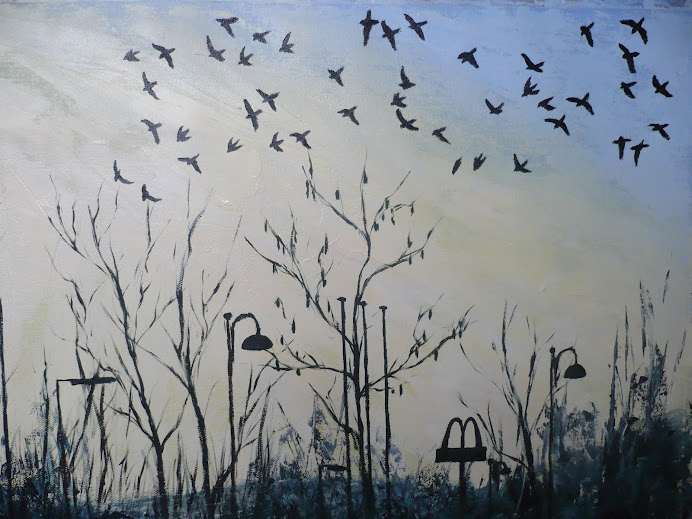
Following advice from my tutor and my own opinion that the original painting for "Figures in an Interior," which is shown in the top photo, was just too vague and not detailed enough, I decided to rework the image. I went back to my original sketches and the original idea to base it on similar techniques and style to the sketches by Henry Moore in his "Shelter Sketchbook", and the result is the drastically different painting in the photo on the bottom.
I'm so glad that I've changed the first painting, and it's made even more apparent the weaknesses in that painting by seeing it here next to the new one. The main problems in the old version are the lack of depth to the pictorial plane and the deadening of the colour by the use of too much black. The application of paint, which was meant to be expressive and gestural, just ends up looking messy and vague.
My tutor pointed out to me the level of detailing that can be achieved whilst still keeping a feeling of movement and freshness, by showing me the work of the OCA tutor Colin Allbrock. This really helped me decided on the amount of detailing that I wanted to add to the new painting.
Another major difference between the paintings, which I'm really glad about, is the use of light and shade within the composition as a whole, not just the light and shade in the figures, but the fact that the top half of the new painting is much lighter than the bottom half, strengthening the illusion of the light casting source of the coloured lights, bringing them into more prominence as opposed to the original painting where they weren't really contributing anything. It also adds a feeling of depth and movement that the blackness in the original painting just couldn't create.
On a personal level I'm glad I stuck to my original idea of including the unusual "harp guitar" instrument which was played by the guitarists, because in the first painting I thought it might look too strange, but now that it's been added it's the normal guitar which looks strange because of the ineffective colours used.
I'll do a full write up in my logbook for "what I have achieved", but what I wanted to show here was a direct comparison between the two paintings.








